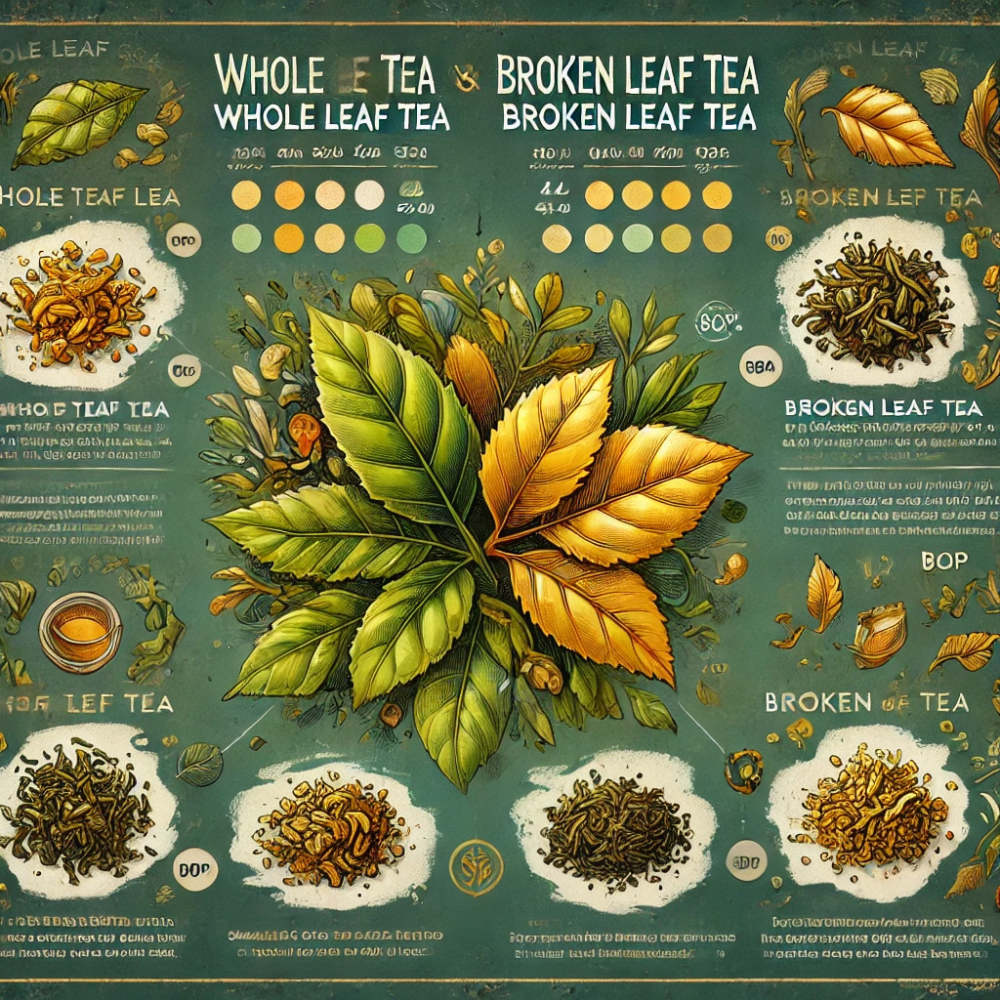The world of tea is full of variety and intricate details that distinguish one type from another. One of the most important aspects is the grading system and the symbols associated with tea. These help determine tea quality and how it’s used. If you’re looking for a deeper understanding of tea grades, this guide will provide everything you need to know.
Black Tea Grades
Black tea is the most common type and is graded based on the quality and processing of its leaves. The main grades include:
1. Whole Leaf
- SFTGFOP: Super Fine Tippy Golden Flowery Orange Pekoe
- High-quality tea with a large percentage of golden buds and full leaves.
- FTGFOP: Fine Tippy Golden Flowery Orange Pekoe
- Excellent quality tea with golden buds and whole leaves.
- GFOP: Golden Flowery Orange Pekoe
- Full leaves with golden buds, slightly lower in quality than the above.
- FOP: Flowery Orange Pekoe
- Whole leaf tea with a distinct flavor. Very common.
2. Broken Leaf
- BOP: Broken Orange Pekoe
- Broken leaves that brew strong, quick-infusing tea.
- FBOP: Flowery Broken Orange Pekoe
- Broken leaves with some golden buds for a refined flavor.
- GBOP: Golden Broken Orange Pekoe
- High-quality broken leaves with golden buds.
These are known for their smaller leaf particles and strong taste.
3. Fannings
- BOPF: Broken Orange Pekoe Fannings
- Common in tea bags due to fast infusion.
4. Dust
- PD: Pekoe Dust
- RD: Red Dust
- Used to produce instant tea.
Green Tea Grades
Green tea is known for its fresh taste and health benefits. It’s graded by leaf shape and processing:
- Sencha: Whole tea leaves, steam-dried.
- Gyokuro: Grown in the shade for a richer flavor.
- Matcha: Powdered green tea used in traditional Japanese ceremonies.
- Gunpowder: Rolled tea leaves in small pellets.
White Tea Grades
White tea is the purest type and is graded based on leaf and bud selection:
- Silver Needle: Only buds, highest quality.
- White Peony: A mix of buds and leaves.
- Shou Mei: Larger leaves, lower grade.
Oolong Tea Grades
Oolong tea combines characteristics of green and black teas and is graded by oxidation level:
- Light Oolong: Lightly oxidized.
- Dark Oolong: Heavily oxidized with a deeper flavor.
Understanding the Symbols
Tea grading symbols carry specific meanings:
- Tippy: Indicates a high amount of golden buds.
- Golden: Refers to the bud color after roasting.
- Flowery: Signifies high-quality tea leaves.
Why Tea Grades Matter
Understanding tea grades helps you choose what suits your taste—whether you want bold or smooth flavor. It also helps you appreciate the quality of what you’re drinking.
Looking for the best tea?
Start by learning its grades and symbols. You’ll find that tea is a world full of details, making every cup a unique experience.
Also check out:
- Explore the world of Dilmah Tea – [Click here]
- Why Dilmah is the best tea brand – [Click here]
- Discover Dilmah products – [Click here]

